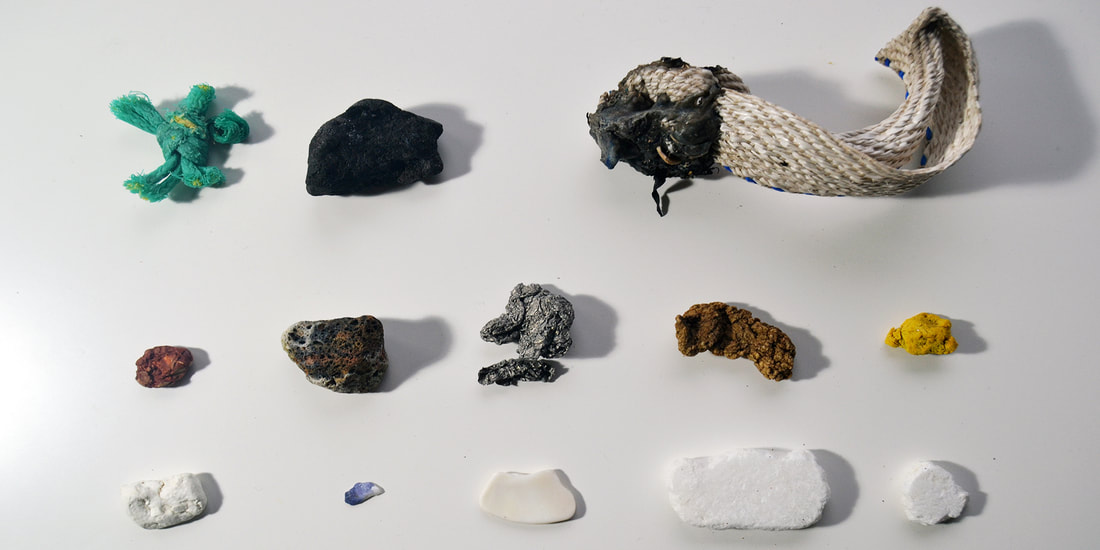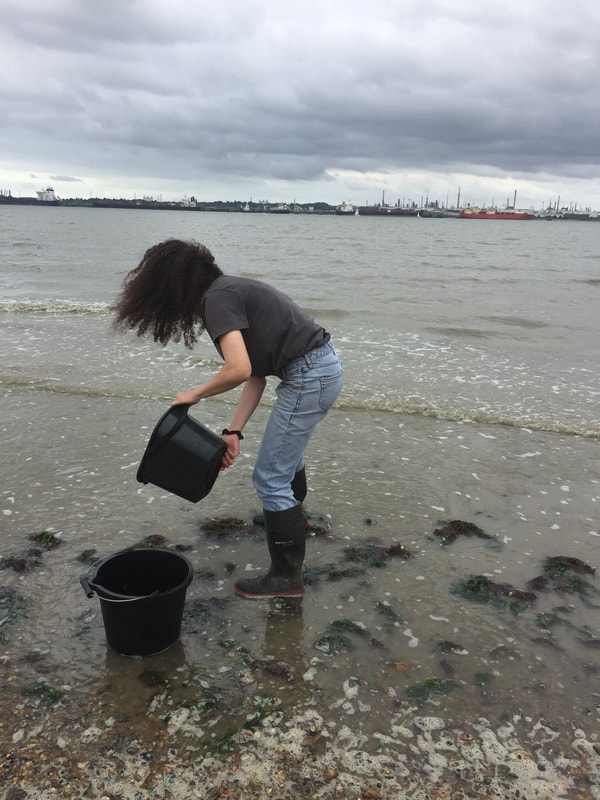|
In my previous sculptural work I was often interested in making objects which were a mixture of man-made forms and natural forms, exploring how these two types of thing fit and relate.
Exploring coastal areas near to me, and looking to find objects to help to start future sculptural works, I came across many items which at first looked natural but turned out to be man-made. These included lumps which looked like rocks, but were a lot lighter, rubbery lumps, hardened polystyrene chunks, bits of rope starting to roll into small pebble shapes and fishing net fragments with shells and sea weed attached, bound together with plastic. The franken-rocks made up of many items and bound with melted plastic are apparently called 'plastiglomerates'. They are a marker of human pollution and have almost become a kind of modern geological formation, in faster time. The fishing gear fragments I found include melted plastics and formed a habitat for organic creatures as small shells and seaweed have grown into them. But how will these plastiglomerate 'rocks' weather over time? Can they act as a geological record of what is described as the Anthropocene Epoch, the period of Earth's history when human activity had a major impact on climate and ecosystems? Or will they break down or be utilised by living creatures? Can they return back to an oil and release all of their small elements?
0 Comments
Your comment will be posted after it is approved.
Leave a Reply. |
AuthorWhat am I doing here? I'm collecting sea water to fill 1,000 bottles and hang them from a scaffold inside an old ruin. Why? Why not? Archives
December 2023
Categories
All
|



 RSS Feed
RSS Feed